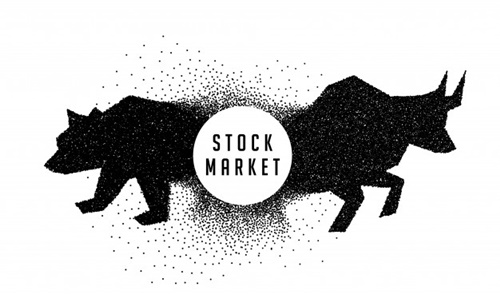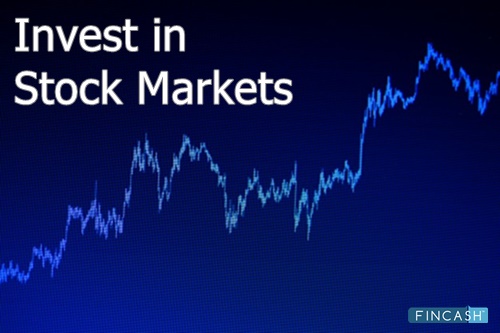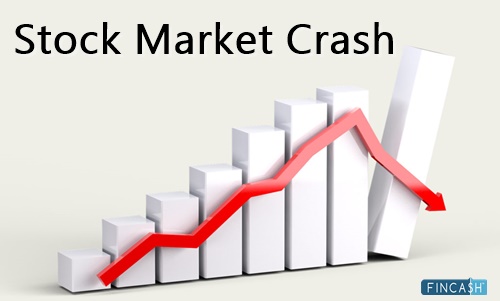
Table of Contents
- Defining the Stock Market
- How does the Stock Market Work?
- Stock Trading Terminologies
- Stock Market Basic Terms
- 1. NSE
- 2. BSE
- 3. Nifty 50
- 4. Sensex
- 5. Demat Account
- 6. Portfolio
- 7. Face Value
- 8. Dividend Yield
- 9. Buy
- 10. Sell
- 11. Ask
- 12. Bid
- 13. Ask-Bid Spread
- 14. Bull
- 15. Bear
- 16. Limit Order
- 17. Market Order
- 18. Day Order
- 19. Volatility
- 20. Going Long
- 21. Averaging Down
- 22. Capitalization
- 23. Authorized Shares
- 24. IPO
- 25. Secondary Offering
- 26. Dividend
- 27. Broker
- 28. Exchange
- 29. Margin Trading
- 30. Margin Call
- 31. Earnings Call
- 32. Stock Symbol
- 33. Futures
- 34. Options
- 35. Gold Option
- 36. Book Value
- 37. Call Option
- 38. Defensive Stock
- 39. Beta
- 40. Alpha
- Things to Keep in Mind Before Investing
- Wrapping Up
Stock Market for Beginners
Most of the times, people put off their ideas of Investing in stock markets only because of the assumption that it might require tons of excessive money. But that is not the entire truth. If you are new to the market, you can easily start with as low as Rs. 500 a month.

The key to double up your wealth is implementing good, consistent habits, such as investing small amounts regularly each month. This will not just assure you adequate returns but will also strengthen your financial position.
However, when you are starting new, confusion and dilemma ought to come in your way. In such a situation, you need nothing more than a comprehensive guide. In this post, you can find out all the details regarding the stock market for beginners.
Defining the Stock Market
The stock market is an exchange type that enables traders to purchase and sell stocks. At the same time, it enables companies to issue stocks to potential customers. A stock signifies a company’s equities. Mainly, there are two major purposes that the stock market services:
- To provide capital to firms so as to expand the business
- To provide a chance for investors to have a share in the companies’ profits
How does the Stock Market Work?
Let's first briefly understand about the stock exchange platform. A stock exchange conducts the trading of instruments like stocks, commodities, derivatives, etc., where several investors and traders are willing to buy/sell stocks. The activities on this platform are regulated by the Securities and Exchange Board of India (SEBI). In order to conduct orders, the participants have to register with SEBI and the stock exchange. The stock prices would depend on the basis of demand and supply as the traders and investors place orders.
When you buy a share, you are not buying it from the company, but from some other existing shareholders. Similarly, when you sell, you sell it to the other traders and not to the company.
Now, let us understand how does share market works:
A company gets listed in the primary market through an Initial Public Offer or IPO
Shares get distributed in the secondary market. The stocks issued can be traded by investors in the secondary market. This is the marketplace for the buyers and sellers to transact and make profits (or losses in some cases)
Stockbrokers and brokerage firms are entities registered with the stock exchange which offer you to buy a particular share at said price. When you place an order to buy a share at a given rate, the broker processes it at the exchange where there are multiple parties involved
Your broker passes on your buy order to the exchange, which searches for a sell order for the same share. The seller and buyer agree upon a price and finalise it after which the order is confirmed
Upon confirmation, the exchange facilitates the transfer of ownership of the shares which is known as 'Settlement'. The process takes T+2 days, i.e. you will get your shares deposited in your Demat account in two working days
But before starting, getting acquainted with a few market-related concepts would be helpful for you.
Stock Trading Terminologies
Stock trading terminologies are referred to as industry-specific terms that are often used when the stock market is read or talked about. Frequently, both rookies and experts use such terms to communicate strategies, indices, stock market charts and other essential elements of this world. Therefore, the essential aspects of share market basics for beginners should be on your priority.
Stock Market Basic Terms
To understand the share market for beginners, it is essential to stay abreast with the basic terms used here on a daily basis. Below-mentioned are some such basics of share market that would be important for you.
1. NSE
The National Stock Exchange of India Ltd. (NSE) is the leading stock exchange in India. Over 1,600 stocks are listed here. NSE was the first exchange in the country to provide a modern, fully-integrated business model comprising exchange listings, trading services, clearing and settlement services, indices, market data feeds, technology solutions and financial education offerings.
2. BSE
Established in 1875, Bombay Stock Exchange Ltd (BSE) is Asia's first & the Fastest Stock Exchange in the world with a speed of 6 microseconds. Currently, 5,400 shares are listed here. BSE's popular equity index - the S&P BSE SENSEX - is India's most widely tracked stock market benchmark index. It is traded internationally on the EUREX as well as on leading exchanges of the BRCS nations (Brazil, Russia, China and South Africa).
Talk to our investment specialist
3. Nifty 50
The NIFTY 50 is an Indian benchmark index that represents the weighted average of the 50 largest companies listed on the National Stock Exchange. It is one of the two main stock indices used in India, the other being the BSE SENSEX. NIFTY 50 is the world's most actively traded contract. WFE, IOM and FIA surveys endorse NSE's leadership position. It acts as a barometer for the overall movement of the stock market.
4. Sensex
The term Sensex refers to the benchmark index of the BSE in India. Created in 1986, the Sensex is the oldest stock index in India and is operated by Standard & Poor's (S&P). The exchange comprises 30 stocks of the country’s largest, financially sound companies. Sensex is also known as BSE SENSEX, which comprises of two words - Sensitivity and Index, which are indicative of what Sensex reflects and calculates - the movements in the BSE.
The term ‘Sensex’ comprises of two words - Sensitive and Index, which are indicative of what Sensex reflects and calculates - the movement in the BSE. The term was coined by stock market expert Deepak Mohini.
5. Demat Account
A Demat account is where you hold shares and securities electronically in a dematerialised account instead of possessing physical certificates. In 1996, dematerialisation was adopted by the share market. It is the process that involves the conversion of physical share certificates – owned by the investors – into equivalent digital securities. These electronic securities are then credited into investors’ Demat account.
Simply put, a Demat account is a kind of Bank account that holds all your shares in a digital or dematerialised form. Just like a bank account, it holds all the certificates to your financial investments like shares, Bonds, Mutual Funds, exchange-traded funds(ETFs), and government securities.
6. Portfolio
The basket of assets or a collection of investments owned by the investor is called a portfolio. The portfolio can hold one stock or multiple securities. It contains a diverse range of financial instruments like shares, bonds, futures, options, etc.
7. Face Value
It is stated as the value of an investment. It is also defined as the nominal value of a stock or bond. All companies issue shares and bonds with a Face Value (also known as fixed value). Assigning face value is important as it helps the company to calculate the Accounting value of its shares.
For stocks, face value is the par value, or original price, of the stock. For bonds and other debts, it is the principal amount of the debt. This value is later used in its Balance Sheet.
8. Dividend Yield
Is a financial ratio (dividend/price) that shows how much a company pays out in dividends each year relative to its stock price. Dividend Yield is expressed as a percentage. It is computed by dividing the dividend per share by the market price per share and multiplying the result by 100. A company with a high dividend yield pays a substantial share of its profits in the form of dividends.
The reciprocal of the dividend yield is the price/dividend ratio.
9. Buy
It is taking a position in a company or buying shares. The investor's purchase price is called the cost basis. When you buy stock, the goal is to sell it at a higher price for gaining profits. Buying assets should have an analyst’s recommendation.
10. Sell
Sell means to liquidity shares in exchange for currency. It can be also called as divestment. Ideally, when you sell an asset, the recommendation of an analyst should be taken because investors sell either to cut down losses or when their goal is accomplished.
11. Ask
Ask price is an offer price, where an investor asks the price for selling their stocks. The seller can fix a price or can also be open to negotiating.
12. Bid
It is the amount you are ready to pay for a stock or any other asset. Generally, a bid is lower than Ask Price, which is the price at which people are willing to sell. The difference between the two prices is called a bid-ask spread.
Sometimes, a buyer will present a bid even if a seller is not actively looking to sell, in which case it is considered an unsolicited bid.
13. Ask-Bid Spread
It is the difference between the highest price that a buyer is willing to pay for an asset and the lowest price that a seller is willing to accept. The spread is the transaction cost. You can consider the bid-ask spread as a measure of the supply and demand for an asset. The bid can represent the demand, while the ask represents the supply. So when these two prices move apart, the price action reflects a change in supply and demand.
So, combining the above two terms (Ask & Bid), it goes like this - investor looking to sell will receive the Bid Price while one looking to buy will pay the ask price.
14. Bull
A market condition that is expected to increase the price of a stock. It is a phase where stocks are going up in value. It is when an investment's price rises over an extended period. The bull market term is commonly used when describing securities, such as stocks, commodities and bonds. Sometimes it can also be used for investments like housing.
In a bull market phase, investors buy a lot of shares because they expect that the shares will increase in value and that they will be able to make a profit by selling them again.
15. Bear
A market condition that is expected to decrease prices in stock price. A bear market is a phase of a few months or years where the price of the security consistently falls. During such a phase, investing can be risky even for the most seasoned of investors. It is a period marked by falling stock prices.
The term is typically referred to as the stock market, but it can also describe specific sectors such as bonds, real estate or foreign exchange.
16. Limit Order
An order type that is executed at a price put for selling or buying. It is an order to purchase or sell securities at a certain price. A buy limit order can be placed only at the limit price or lower than that. And, a sell order can be placed at the limit price or higher than that.
For example, suppose that you wish to buy shares of a stock but don’t want to spend anywhere more than Rs. 1000. You can then submit a limit order for that amount, and your order will be placed if the stock price touches Rs. 1000 or is lower than that.
17. Market Order
An order type that is executed quickly at the market price. Market order type guarantees that the order shall be executed; however, it doesn’t guarantee the price of execution. Generally, a market order executes at or around the current bid or ask for the price.
But, it is essential for traders to remember that the last-traded price will not specifically be the price at which the next order will be executed.
18. Day Order
A day order can be referred to as a limit order for buying or selling a security. A signal to a broker to execute a trade at a certain rate that will expire at the end of the trading day if it doesn’t get completed. These are limited orders to buy/sell stocks that are only good for the remainder of the trading day on which are placed.
19. Volatility
It shows how fast a stock is moving down or up. Volatility is a rate at which the price of an asset increases or decreases for a given set of returns. It is measured by calculating the Standard Deviation of the annualised returns over a given period of time.
Volatility measures the risk of security. The volatile asset is often considered riskier than less volatile assets because the price is expected to be less predictable.
20. Going Long
Gong long, also known as long position means betting on the price of the stock that will increase to ‘sell high’ and ‘buy low’. A trader purchases an asset with the expectation that it will increase in value. This is also referred to as a bullish attitude.
21. Averaging Down
It is the principle of buying low and selling high. When a trader purchases an asset, the asset’s price drops, and if the trader purchases more, it is referred to as averaging down. It is an investment strategy where the trader purchases additional shares of a previously initiated investment after the price has dropped. The result of this second purchase is a decrease in the average price at which the investor purchased the stock.
However, a volatile market does not allow an investor always to follow this principle.
22. Capitalization
Capitalization has various meanings depending on the context. In finance, capitalization is the cost of capital in the form of a company’s long-term debt, stock, retained earnings, etc. Other than that, market capitalization is another term that refers to the number of outstanding shares that are multiplied by the share price.
23. Authorized Shares
It is the total number of shares a firm is allowed to trade. The number of authorized shares is specified in the company’s articles of incorporation. It is also usually listed in the capital accounts section of the balance sheet. Authorized shares should not be confused with outstanding shares, which are the no of shares the firm has issued that are held by the public.
24. IPO
Initial Public Offering (IPO) takes place when a privately held company turns a publicly traded one. IPO can simply be understood from the fact that it allows private companies to go public by trading the shares to outside investors for the first time. In case you are the founder of a private company and have several shareholders on board, after a brief discussion and affirmation from notable members, you can sell the shares to gain financial value in return.
Also, by going IPO, you can get your company’s name listed on the stock exchange.
25. Secondary Offering
When a large number of shares of a public company are sold from one investor to another on the secondary market, it is called a secondary offering. In such a case, the public company does not receive any cash nor issue any new shares, rather, traders buy and sell shares directly from each other.
26. Dividend
A part of the company’s earnings that is paid to shareholders is called a Dividend. They are one of the ways investors earn a return from investing in the stock. Dividends are paid on a regular basis.
So basically, when a firm generates a profit and accumulates retained earnings, those earnings can be either paid out to shareholders as a dividend or reinvested in the business.
27. Broker
A broker is someone buying or selling stocks on the investor’s behalf. They are middlemen between two parties, i.e. buyers and sellers. Besides executive client orders, some brokers also provide additional services such as investment strategies, research, intelligence, and other value-added services.
Brokers charge a fee or commission from their clients. Some of the top brokerages in India are Sharekhan, Zerodha, Motilal Oswal, Edelweiss, ICICI Direct, Angel Broking, HDFC Securities and mong many others.
28. Exchange
An exchange is a marketplace where different types of investments get traded, such as stocks, commodities, bonds, options and futures, etc. Exchanges give companies, governments, and other groups a platform to sell assets to the investing public.
The main function of an exchange is to maintain efficient dissemination of information about prices for any type of security that trades on that exchange. Exchanges are located in most countries worldwide, some of the prominent exchanges include the National Stock Exchange (NSE), Bombay Stock Exchange (BSE), New York Stock Exchange (NYSE), the Nasdaq, the London Stock Exchange (LSE), and the Tokyo Stock Exchange (TSE).
29. Margin Trading
It refers to borrowing money from the broker to purchase stock. It’s a process where an investor buys more stocks than they can afford to. Margin trading involves buying and selling of securities in one single session. To avail margin trading facility, one has to open a Margin Account with a broker. The trader has to maintain a minimum margin (minimum balance) in the margin account.
30. Margin Call
A margin call transpires when the value of a margin account (the one comprising securities purchased with borrowed money) of an investor goes below the required amount of a broker. Thus, a margin call turns out to be the demand of a broker that an investor deposit additional securities or money so that the account can be brought up to its minimum value, which is called the maintenance margin.
31. Earnings Call
The earnings call is known as the conference call between investors, analysts or a public company’s management and the media to talk about the financial results of a company during a specific period like a quarter or a fiscal year.
Usually, an earnings call comes before the earnings report. And, it comprises summary information on financial performance in a period.
32. Stock Symbol
It is a form of identification used to identify publicly-traded companies using a series of letters. The symbol is mostly the abbreviations consisting of the company’s name to describe a company’s stock.
It’s a 1 to 3 characters alphabet root symbol representing an issuer listed Exchange, for example, TCS stands for Tata Consultancy Services, INFY stands for Infosys. The reason behind the stock symbol is that it would take a lot of space on the ticket board to write the company’s full name. In such a case, the stock symbol comes handy and it is just 3-4 letters. For this reason, stock symbols are also referred to as ticker symbols.
33. Futures
A future is an obligation and a right to sell or buy an underlying stock (or an asset) on a specific date, at a preset price and deliver it at a predetermined time unless the position of the holder is closed before the expiry of the contract.
34. Options
In contrast to Futures, Options give a right to the investor, but not an obligation to purchase or sell shares at a given price at any time as far as the contract is still in effect. Essentially, Options are divided into two different types, such as Call Option and Put Option.
35. Gold Option
A gold option is a derivative with gold as the underlying asset. It is a contract between two parties to facilitate a potential transaction on a quantity of gold. In this option, a gold futures agreement would be the underlying asset securing the investment. The option agreement terms list details such as the quantity, delivery date and strike price, which are all predetermined.
A gold option gives the holder the right, but not the obligation, to purchase or sell a specific quantity of gold at a specified strike price on the contract's expiration date.
36. Book Value
Book Value is a key measure that investors use to gauge a stock's valuation. It is the Net worth of an asset that is recorded on the balance sheet. The book value of a company is the total value of the company's assets, minus the company's outstanding liabilities.
Book value is also the Net Asset Value of a company calculated as total assets minus intangible assets (patents, goodwill) and liabilities.
37. Call Option
Call options are those financial contracts that provide a right to the trader, but not the obligation to purchase a bond, stock, commodity or any other instrument or asset at a certain price within the specified time period.
These bonds, stocks, or commodities are known as the underlying asset. You get to gain profit if your underlying asset increases in terms of its pricing.
38. Defensive Stock
A defensive stock ensures constant returns as dividends, despite the fluctuations in the entire stock market. Because of the products' constant requirements, defensive shares maintain stability during different phases of the business cycle.
A primary characteristic of defensive stock is that any movement in the stock market does not affect it. Therefore, this acts as a boon and a bane for the economic structure. Furthermore, during the Recession, it is a blessing to have defensive stocks in your portfolio. Even in the market's downturn, a list of defensive stocks offers stable returns. However, the feature becomes a pain for investors during economic growth because they lose the chances of gaining higher returns.
39. Beta
Beta measures volatility in a stock’s price or fund relative to a benchmark and is denoted in positive or negative figures. Investors can use beta as a parameter to determine an investment security's market risk, and hence its appropriateness for a particular investor's risk tolerance. A beta of 1 signifies that the stock’s price moves in line with the market, a beta of greater than 1 designates that the stock is riskier than the market, and a beta of less than 1 means that the stock is less risky than the market.
So, lower beta is better in a falling market. In a rising market, high beta is better.
40. Alpha
Alpha is a measure of the success of your investment or rather outperformance against the benchmark. It measures how much the fund or stock has performed in the general market. Alpha is usually a single number (e.g., 1 or 4), and is expressed as a percentage that reflects how an investment performed relative to a benchmark.
A positive alpha of 1 means that the fund has outperformed its benchmark index by 1 per cent, while a negative alpha of -1 would indicate that the fund has produced 1 per cent lower returns than its market benchmark. An alpha of zero means that the investment earned a return that matched the overall market return as reflected by the selected benchmark index. So, basically, an investor’s strategy should be to buy securities with positive alpha.
Things to Keep in Mind Before Investing
Creating Goals
Before you start investing in the stock market, you must have your Financial goals and requirements listed planned. It will help you move in the right direction.
Make Up for the Missed Times
Getting the most out of this market requires utmost, unhindered commitment. Therefore, you will have to be consistent with your savings. This means that even if you missed a week, you’d have to invest double the following week to make up for the missed times.
Know your Risk Tolerance
Risk tolerance is generally impacted by your perception of this factor. Before you start investing, you must understand your risk tolerance. It will help you choose the stocks better.
Wrapping Up
The stock market for beginners is definitely a risky job. Despite learning, acquiring knowledge and understanding it thoroughly, there are always a few things that are left untouched. However, if you think you cannot handle stocks, investing in Mutual Funds will be recommended. Not just they are easy to manage but affordable as well.
All efforts have been made to ensure the information provided here is accurate. However, no guarantees are made regarding correctness of data. Please verify with scheme information document before making any investment.











